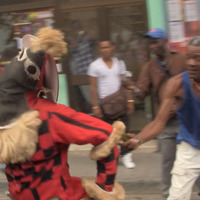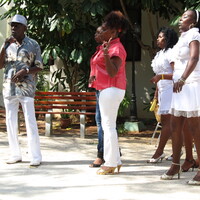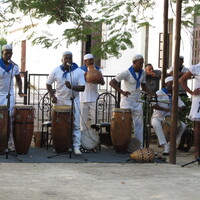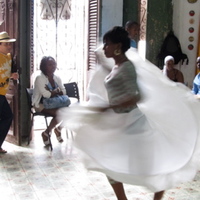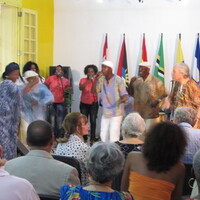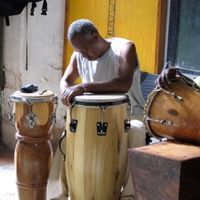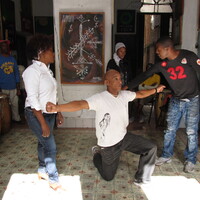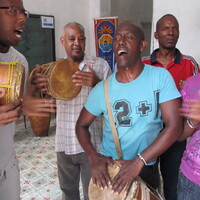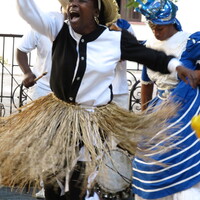Dance-Music as Communication
Music and dance have been referred to as kinds of "wordless" communication. But how exactly does that work? While this question has been explained with various ideas from symbolic gestures to instinctual drives, this site uses the concept of kinetic conversation developed by Elizabeth Kimzey Batiuk to interpret creative public performances of Arocuban folklore.
The kinetic coversation concept examines how individuals alter standard styles of performance as they negotiate their identity in the context of the world of professional folkloric performance in contemporary Havana. There are three "case studies" presented here. Each one focuses on one performer, but considers their performance in the context of the collective enactment of the dance-music event. Each of the case studies feature different types of dance-music. The interpretations of the performances draw on interviews with the main performer, as well as feed-back interviews, musical analysis, and interviews with some of the other performers who participated. This let's us thing about the protagonist of the performance in the context of a community that is responding to the protagonist's way of interpreting the particular type of dance-music they are performing.
The idea of kinetic converation borrows from theories of linguistic discourse and embodied cognition to build a way of understanding dance-music performance in the context of everyday life. Like language as a medium for verbal interaction, dance-music also organizes interaction between musician and dancer, also between performers and audiences., and so on. Also like language, an individual can posit themselves as a subject through dance-music and performance can be understood as a way of producing a particular sense of self. That is what we can observe through my interpretations of the different performances: how performers use dance-music events to shape a sense of self through the interactions and shared meanings of performance. Of course, the performances do not simply take a type of dance-music and render it exactly as it was just because this is folklore. Rather they creatively alter it, as Isnavi mentions, "to enrich the dance." Those alterations reflect thier values, aspirations, way of understanding and connecting wtih their fellow performers.
But how does that involve communication? Certainly, dance-music does not make sentences or declarative statments as we do with langauge (even though some theorists have use terms like "sentence" or "question and answer" to refer to musical phrases). Communication, in the context of kietic conversatons, examines the alterations that performance make to standard styles of performance. Public folkloric performance in Cuba is actually a highly regulated pergormance genre. (See the page "Folklore in Cuba"). We can use insights from embodied cognition to understand how alterations of the expected performance style provoke emotional responses in other perfomers and audiences. These alterations and the interactions the catalyze (or disrupt) become the meaningful interactios that shape the ultimate meaning established by the performance.
ABOUT THIS EXHIBIT
I made this exhibit for a class on archival methods at the University of Michigan. The exhibit draws on materials from my ethnomusicology dissertation, Kinetic Conversations: Creative Dance-Music Performance and the Negotiation of Identity in Contemporary Havana (University of Michigan, 2015). The exhibit presents creative performances of Afrocuban folklore recorded in Havana between 2009 and 2012. It focuses on members of the professional ensemble Oba Ilú and highlights the interpretations of different types of folkloric dance-music including columbia (a sub-style of rumba), abakuá folklore, and rumba as used to ornament the contemporary performance of salsa cubana. Like the dissertation, the exhibit highlights the stories of individual performers while providing descriptions of how the different types of dance-music are widely interpreted and performed in Havana today. The dissertation used ethnographic methods as well as historical analysis of folklore in Cuba. It includes transcriptions of the vocal texts of the performance, rhythmic notation, and interpretations of creative performances. I studied music and dance with members of Oba Ilú over a period of five years. The performers featured here were not only consultants but also my teachers and collaborators.
